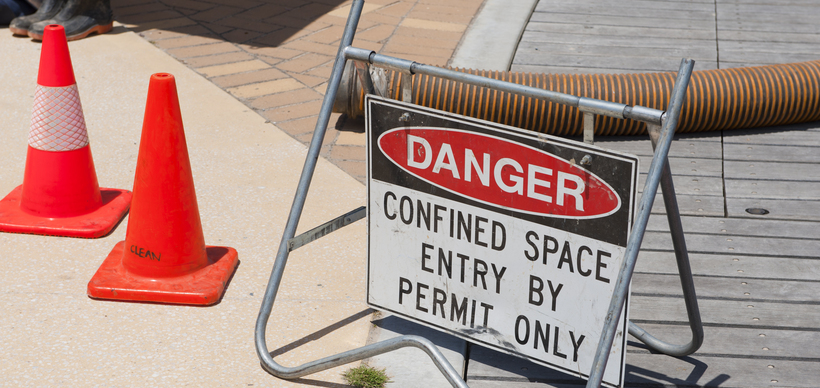Non-Permit Confined Space: Definition & Requirements
Non-Permit Confined Space: Definition & Requirements
June 21, 2023 |
Confined spaces exist in many industries, including construction, manufacturing, and mining. These areas must be contained by physical barriers or other methods specified by OSHA standards.
If you don’t follow these requirements properly and have an accident, it could result in serious injuries or even death. So what exactly is a non-permit confined space? And how do you know if you’re working in one? Here’s what you need to know about this type of workspace:
Definition Of A Non-Permit Confined Space
A non-permit confined space is a location that has the potential to contain a hazardous atmosphere but is not required to have OSHA respirators or other protective equipment. A permit-required (PR) space is any location where an employee may be exposed to atmospheric contaminants at or above permissible exposure limits (PELs).
A competent person must evaluate a PR space before it can be entered by anyone other than authorized individuals. The competent person must perform an initial evaluation of all spaces within the workplace and then reevaluate them annually. The purpose of this evaluation is to determine if any hazards could cause death or serious physical harm if workers were exposed for long periods without proper precautions being taken first.
Requirements for Non-Permit Confined Spaces:
Training Employees
Training employees is one of the most important parts of a non-permit confined space program. Your employees should be trained on how to recognize and avoid hazards and adequately implement the safe work practices required for each job site.
The first step in training is ensuring that all workers understand their roles in your non-permit confined space program. They should know what equipment they need, what hazards they may encounter on site, and how they can help prevent them from occurring in the first place.
After you’ve trained your employees on how to recognize risks and prevent them from happening at work sites (and after you’ve made sure that everyone understands their role), you should also provide additional instruction so that each person knows exactly what steps they need to take when working within a confined space environment – whether it’s an emergency or just another day at work!
Monitoring And Rescue Equipment
Monitoring and rescue equipment is required for all non-permit confined spaces. This means that the employer must provide a device or system that enables a worker to monitor the oxygen level and carbon dioxide (CO2) concentration in the atmosphere at any time during entry into or occupancy of a non-permit confined space. Monitoring devices should be calibrated before each use, tested monthly, and maintained according to manufacturer recommendations.
Monitoring and rescue equipment must be provided for each permit-required confined space. Monitoring equipment includes:
- Continuous gas detection system (CGS) or an acoustic monitoring system that detects the sound of compressed air leaks;
- Audible alarm device(s); and
- A pressure-reducing valve with a means to shut off the flow of compressed air when there is a leak in an airline leading into or out of the permit-required confined space if leakage could harm persons entering or working in it.
Workers must also have immediate access to an escape device (such as an anchor line or ladder) if they need to exit quickly due to an emergency inside the confined space.
Entry And Exit
Entry and exit are two of the most important aspects of a confined space. Entry is defined as any time you enter a confined space, whether for work or not. You must first be trained in all entry aspects before entering a permit-required confined space. The same goes for exit: if you’re in one, you must know how and where to get out safely before leaving.
Personal Protective Equipment (PPE)
Personal protective equipment (PPE) is used to protect a worker from hazards. It also helps ensure they can perform their tasks safely and efficiently. The type of PPE needed depends on the hazards involved.
There are several types of PPE, but some common examples include:
- Safety glasses or goggles to protect your eyes from flying objects or chemicals
- Hard hats protect from falling objects
- Steel-toed boots prevent foot injuries caused by stepping on sharp objects such as metal shards; and
- Gloves protect the hands from burns caused by hot materials being welded together
- Flashlights or headlamps so that workers can see clearly while doing tasks inside dark areas where lights may not reach all areas
Respiratory protection such as self-contained breathing apparatus (SCBA) devices with oxygen tanks or air bottles attached so they can provide sufficient airflow while working inside confined spaces where dangerous gases may collect at high levels.
